
 |
Search
Affiliates
Catalog
Classifieds
Newsletter
MyJumpSpace |
|
What is Overspeed
Training?
The purpose of overspeed training is to increase both your stride rate and stride length by forcing you to perform at a much higher level than you are capable of without assistance. Imagine running down a hill, where your legs step further and you run faster you normally do. Continuous training in this fashion will get your nervous and muscular systems accustomed to running at a faster pace. After several weeks of training with assistance, you can now run without assistance and at the faster pace you have been training at. Continued Below... |
|
The Hypergravity Weight Belt Great to use with the Peterson Step-Ups for Jumpers Knees from $99.95 |
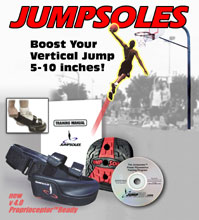 The World's #1 plyometric training shoe platform has the ultimate upgrade. Only $69.95 |
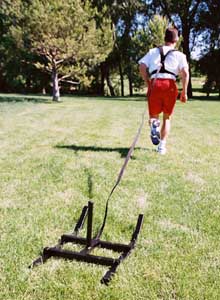
$159.95 |
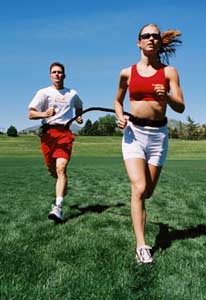 Leap Frog $39.95 |
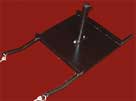 Drag Sled $139.90 with belt |
 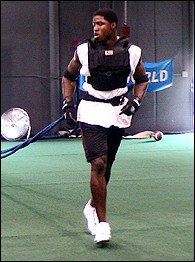 Xvest Weighted Vests Great to use with the Peterson Step-Ups for Jumpers Knees from $129.99 |
| Continued from above... Words of Caution Take Overspeed Training VERY seriously. Because you are running faster than normal, sometimes you cannot handle the speed and can take a nasty fall. We advise training on soft surfaces such as grass. Here are a few other pointers: - Always use Overspeed Training at the beginning of your workout, after a general warm-up and stretching session. Only when your muscles are not fatigued can you train correctly and have less chance of injury. -Rest completely between sets. You are working for longer and faster strides, not conditioning or endurance. -Progress slowly. In your first week, sprint only at 3/4 speed to get your body used to the extra assistance. Types of Overspeed Training The easiest form of Overspeed Training is Downhill Sprinting. It is also the most dangerous because it is usually a harder surface and many people do not perform it correctly. Use about a 50 yard area that is between 1 and 3 1/2 degrees slope. Any more than this and there are more potentials for overstriding or falling. Wear protective clothing, such as a jacket and training pants to prevent cuts and scrapes. Again, we do not recommend downhill sprinting, but if you are to do it you should do it correctly. The second form of Overspeed Training and probably the most popular, is parachute assisted training. With a parachute, you run with resistance, and with a quick release you let the parachute go and enter the Overspeed phase. This method seems to work the best because you can control when you want to release and enter the Overspeed phase. click for speed parachute The third form of Overspeed Training is the use of elastics. Most commonly, two runners will run, one in front and one in back, and the back runner will lag behind, then get pulled by the elastic and enter the Overspeed phase. Alternatively, you can do this exercise alone while tied to an anchor, and get pulled toward the anchor. The solo exercise involves a quick release feature, where you release the elastic and continue to run past the designated point. 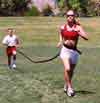 click for resistance trainer For Overspeed Training Products, check out our Speed Training page: http://www.jumpusa.com/speed.htm |